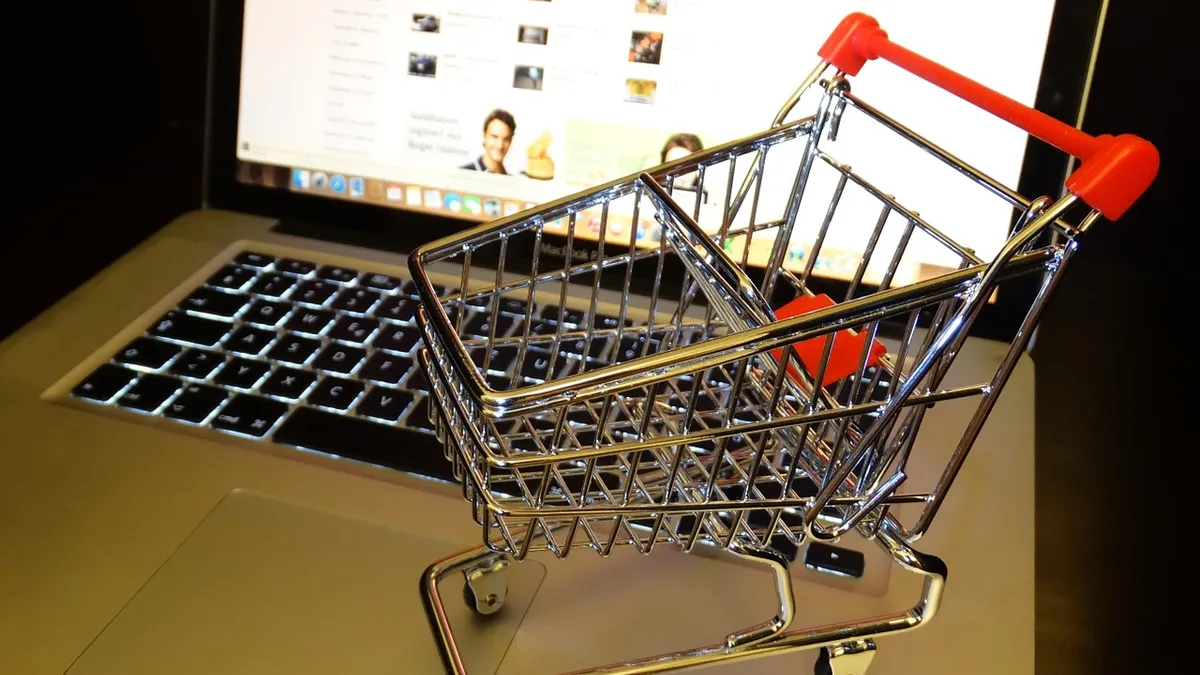Dive Brief:
- An estimated $55 billion in CPG trade spending will migrate online in the coming years, and grocers are not positioned to capitalize on this shift, according to a report from Gartner L2. The firm found less than half of the retailers it surveyed offered display ads on their homepage, category and product pages.
- Large retailers have captured most of the online trade dollars being spent by suppliers. Amazon, Target and Walmart together accounted for 30% of display advertising impressions measured across 266 CPG brands, Gartner L2 found.
- Sixteen percent of Amazon’s product ads were sponsored listings, and during the next two years the e-tailer is expected to boost its sponsored item revenue by 50%. Overall, just 7% of grocers studied utilize featured and sponsored posts on their websites.
Dive Insight:
Grocers know how to put dollars to work in their stores — earning billions from CPG brands and excelling through store organization — but many are unfamiliar with how to do so online. As a result, they may be leaving a lot of money on the table.
According to Gartner L2, some retailers could be concerned about diminishing the online experience for shoppers. The report notes that consumers tend to dislike intrusive display ads — but it also notes that grocers can deftly weave sponsored content into their websites.
Brand stores offer one such option. These are separate portals dedicated to one manufacturer — typically a household name — that feature product listings, information and other potentially useful content. Walmart offers a Gillette brand store on its website that lets shoppers chat with company representatives. According to Gartner L2, only 27% of grocers offer brand stores.
Another option is to monetize product suggestions, which are complementary items offered when shoppers check out, or add something to their basket. FreshDirect, the report noted, does a particularly effective job of building baskets with its product suggestions that incorporate CPG trade dollars.
Leading grocers are beginning to see the opportunity with online trade spending. Kroger effectively places ads on its website, Gartner L2 noted, while Albertsons recently established a separate division within the company to optimize ad spending and entice vendors to partner with it. The program, established earlier this year, allows vendors to track how their ads impact sales and how to better target shoppers through data.
Many grocers offer online shopping and delivery through Instacart, which excels at partnering with CPG brands, Gartner L2 said. Its report noted that half of unbranded searches across 29 partner grocers’ sites returned “featured” products, which are paid listings. The firm noted that grocers should make sure they’re getting a fair percentage of those ad dollars.
“As Instacart deepens its direct relationships with vendor brands, grocers need to be wary that they are not cut out of trade spend, relegated to serving as Instacart’s warehouses,” according to its report.
CPG companies, many of whom have struggled with sales declines recently, are eager to reach consumers. As these consumers do more of their shopping online, grocers need to make sure they’re not only offering a compelling experience, but effectively monetizing their promotions, as well.









